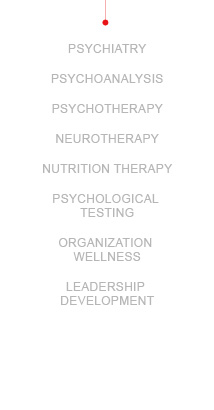Mood disorders represent an overarching category of illness related to mood, the underlying and longitudinal emotional state of the individual. Two groups of mood disorders are broadly recognized; the division is based on whether the person has ever had a manic or hypomanic episode. Thus, there are depressive disorders, of which the best known and most researched is major depressive disorder (MDD) commonly called clinical depression or major depression, and bipolar disorder (BD), formerly known as “manic depression” and described by intermittent periods of manic and depressed episodes.
Bipolar Disorder
Bipolar disorder, otherwise known as manic depression, is a type of mood disorders defined by the presence of one or more episodes of abnormally elevated energy levels, cognition, and mood with or without one or more depressive episodes. The elevated moods are clinically referred to as mania or, if milder, hypomania. Individuals who experience manic episodes also commonly experience depressive episodes, or symptoms, or mixed episodes in which features of both mania and depression are present at the same time.
The disorder has been subdivided into bipolar I, bipolar II, cyclothymia, and other types-bipolar spectrum:
- Bipolar I: is distinguished by the presence or history of one or more manic episodes or mixed episodes with or without major depressive episodes. A depressive episode is not required for the diagnosis of Bipolar I disorder, but depressive episodes are often part of the course of the illness.
- Bipolar II: consisting of recurrent intermittent hypomanic and depressive episodes.
- Cyclothymia is a different form of bipolar disorder, consisting of recurrent hypomanic and dysthymic episodes, but no full manic episodes or full major depressive episodes.
- Bipolar Disorder Not Otherwise Specified (BD-NOS), sometimes called “sub-threshold” bipolar, indicates that the patient suffers from some symptoms in the bipolar spectrum (e.g. manic and depressive symptoms) but does not fully qualify for any of the three formal bipolar DSM-IV diagnoses mentioned above.
- It is estimated that roughly one percent of the adult population suffers from bipolar I, roughly one percent of the adult population suffers from bipolar II or cyclothymia, and somewhere between two and five percent suffer from “sub-threshold” forms of bipolar disorder.
Data from the United States on lifetime prevalence varies; but it indicates a rate of around 1% for bipolar I, 0.5%–1% for bipolar II or cyclothymia, and 2%–5% for sub-threshold cases meeting some, but not all, criteria. The onset of full symptoms generally occurs in late adolescence or young adulthood. Diagnosis is based on the person’s self-reported experiences, as well as observed behavior.
Bipolar Disorder is a serious problem for the individual and their relationship with their loved ones. There are several different diagnoses that are included in the bipolar disorders category, including Bipolar Disorder I, Bipolar Disorder II, and Cyclothymia. These disorders have a common experience of intense mood swings that significantly interfere with life. These mood swings range in intensity and duration. They include prolonged periods of depression as well as extended periods of mania or hypomania where a person may feel unusually energetic, or revved up, a decreased need for sleep, changes in appetite, racing thoughts, and/or impulsive behavior that may have destructive consequences.
Moods swings are a very normal part of life for most of us; some days we feel “up” and some days we feel “down.” At times these feelings can seem like they come out of the blue. However, if you are concerned that you may have more extreme mood swings that last for a prolonged period of time that have a negative impact on your life, it may be useful to contact a professional regarding your concerns.

































